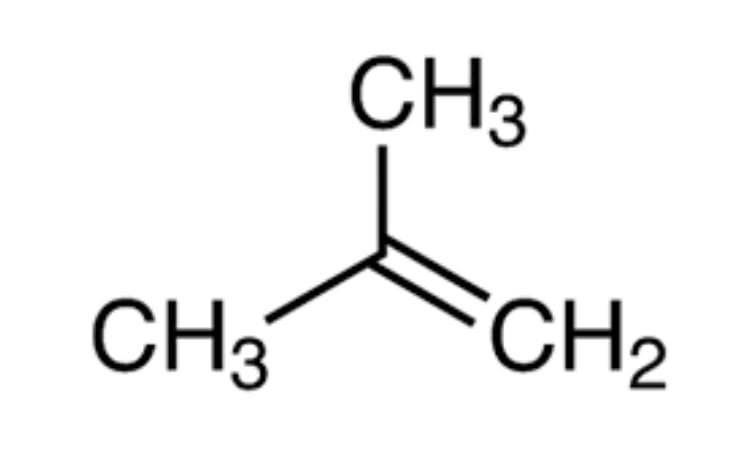Discover the latest insights into the dynamic world of Isobutene prices with a comprehensive analysis of trends across Asia, Europe, North America, Latin America, and the Middle East & Africa. Understanding the global landscape is crucial for businesses and stakeholders aiming to navigate the complex market dynamics of Isobutene.
Request for Real-Time Isobutene Prices: https://www.procurementresource.com/resource-center/isobutene-price-trends/pricerequest
Definition:
Isobutene, also known as isobutylene, is a colorless, flammable gas with a faint petroleum-like odor. It’s a significant building block in the petrochemical industry. Structurally, it’s a branched-chain alkene, part of the family of olefins, composed of four carbon atoms with a double bond between two of them.
This compound finds extensive use in the production of various chemicals, including butyl rubber, methyl tert-butyl ether (MTBE), isooctane, and other polymers. Its versatility stems from its ability to undergo reactions like alkylation, polymerization, and oxidation, enabling its incorporation into diverse products.
Isobutene’s market demand is influenced by several industries, such as automotive, chemical, and polymer manufacturing. The fluctuations in its pricing are closely tied to supply-demand dynamics, feedstock costs, technological advancements, and regulatory changes within the petrochemical sector.
Key Details About Isobutene Price Trends:
Isobutene, also known as methylpropene, is a colorless, flammable gas derived from petroleum. Its molecular formula is C4H8, and it’s a key building block in the production of various chemicals. Isobutene is primarily used in the manufacturing of butyl rubber, a key material in tire production due to its impermeability to gases.
Price trends for isobutene are influenced by multiple factors, including supply and demand dynamics, fluctuations in crude oil prices (since it’s a petroleum derivative), market speculation, and global economic conditions. Its demand in the petrochemical industry, especially for butyl rubber, significantly impacts its pricing. Additionally, its application in producing methyl tert-butyl ether (MTBE), a fuel additive, and as a feedstock in the production of various chemicals contributes to price variations. Global market shifts and geopolitical events also play a role in determining isobutene’s price trends in different regions.
Industrial Uses Impacting Isobutene Price Trends:
Isobutene, a valuable hydrocarbon, finds widespread industrial applications, significantly influencing its price trends. One primary use is in the production of high-octane gasoline, where isobutene serves as a crucial component in the alkylation process, enhancing fuel performance. Additionally, it plays a pivotal role in the manufacturing of butyl rubber, a key material in the production of tires, adhesives, and sealants.
Isobutene’s significance extends to the production of methyl tert-butyl ether (MTBE), an oxygenate additive in gasoline. As environmental regulations evolve, the demand for oxygenates like MTBE may impact isobutene prices. Moreover, isobutene serves as a feedstock for the synthesis of various chemicals, contributing to its versatility in the petrochemical industry. Understanding these industrial applications is essential for grasping the dynamics that shape isobutene price trends in the global market.
Key Players:
The Isobutene market is influenced by various key players who contribute significantly to its production, distribution, and pricing. Some prominent companies in the Isobutene industry include:
-
ExxonMobil: Renowned for its extensive petrochemical operations, ExxonMobil is a major player in the production of Isobutene, utilizing it for various downstream applications.
-
LyondellBasell: A global chemical company, LyondellBasell engages in the manufacturing and supply of Isobutene, catering to diverse industries.
-
TPC Group: Specializing in petrochemical and chemical products, TPC Group is a notable supplier of Isobutene and its derivatives.
-
Evonik Industries: Known for its focus on specialty chemicals, Evonik Industries plays a significant role in Isobutene production for applications in various sectors.
-
BASF SE: As a leading chemical producer, BASF SE contributes to the Isobutene market, providing raw materials for several industries.
These companies play a pivotal role in shaping Isobutene prices, driving innovations, and meeting the demands of various industries reliant on Isobutene derivatives.
Conclusion:
In conclusion, this in-depth exploration of Isobutene prices, trends, and forecasts equips stakeholders with the knowledge needed to make informed decisions in a rapidly evolving market. Stay ahead of the curve by understanding the nuances that shape Isobutene pricing across the globe, ensuring your business is poised for success in this dynamic industry.


